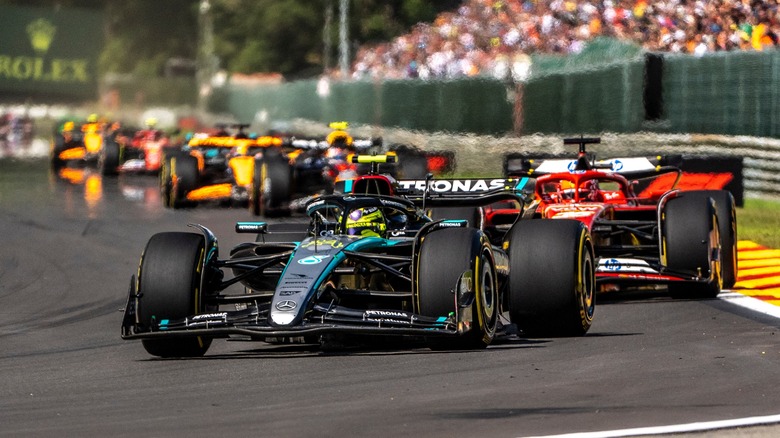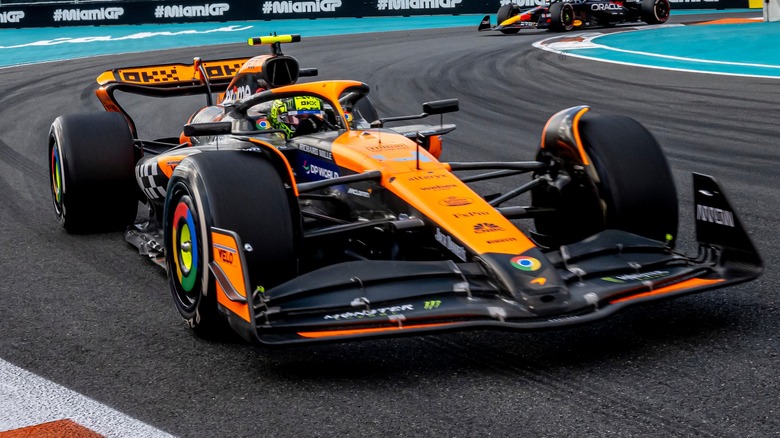Why Do F1 Cars Swerve On The Track?
If you've ever watched Formula 1, you've probably seen the F1 cars zigzagging around the track. While it may seem a bit silly, this swerving is actually very important for F1 cars — it could even spell the difference between a win and a loss. The zigzag is mostly about the tires.
The most prominent reason that even the fastest F1 cars swerve around is to warm up their tires. Formula 1 tires, all supplied by the same major tire brand, are designed to perform at their best once they're warmed up — to over 200 degrees Fahrenheit. That's because cold tires provide less traction. Wheels wouldn't reach their optimal temperature in the time it takes to leave the pit and head to the starting line, so F1 cars swerve around to create friction, heating up the tires faster. This motion also removes debris from the tires that got stuck in the cracks during practice, ensuring optimal performance going into the race.
Another reason for zigzagging has to do with fuel. In Formula 1, the lighter the car the better — the average weight of an F1 car is 1,759 pounds. By swerving around, drivers will empty the tank a bit and make their car weigh just a little less. It may seem like nothing, but anything helps at the start of the race when you're attempting to reach 60 miles per hour in a little over two seconds — and eventually reach incredible top speeds.
When do cars swerve on the track in Formula 1?
Since Formula 1 cars zigzag to warm up tires and reduce weight, it's usually done in the warmup lap – or even the first few early laps. It's super important for Formula 1 cars to have warmed-up tires and gain positioning as early as possible. You will also see F1 cars swerving around during safety car phases, when a car is brought onto the track to slow the field, for instance if there's been a crash. If the entire race is slowed down, it's seen as a good opportunity to get some zigzagging in before the race restarts.
It should be noted that zigzagging is not allowed during certain parts of the race. If drivers swerve dramatically on the track to defend their position or block another car, they can get in trouble for dangerous driving practices. In Formula 1, a first-time offense could be met with a warning. Multiple warnings, however, can lead to a time penalty. Drivers can even be disqualified from the race if the offense is serious enough. You won't catch the best Formula 1 drivers swerving during the heat of the race.

